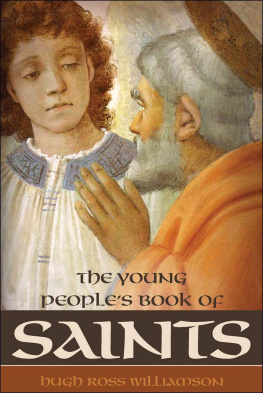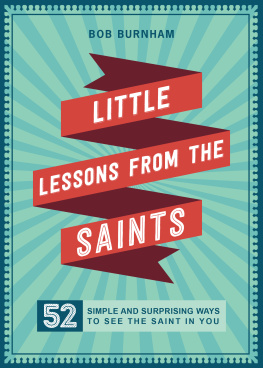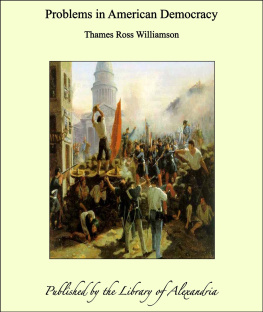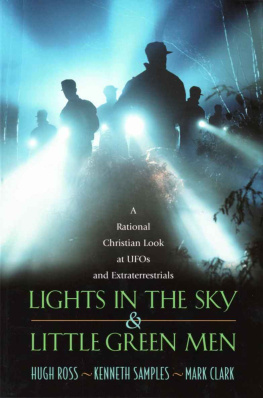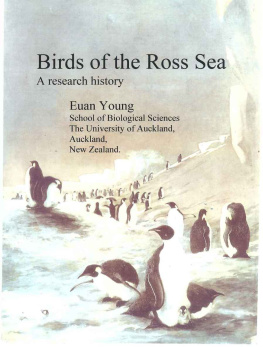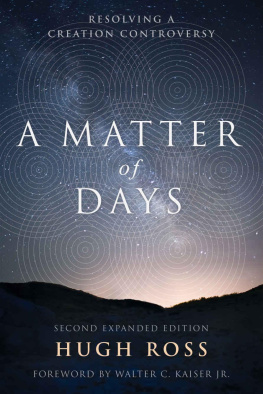Hugh Ross Williamson - Young People’s Book of Saints
Here you can read online Hugh Ross Williamson - Young People’s Book of Saints full text of the book (entire story) in english for free. Download pdf and epub, get meaning, cover and reviews about this ebook. year: 2013, publisher: Sophia Institute Press, genre: Art. Description of the work, (preface) as well as reviews are available. Best literature library LitArk.com created for fans of good reading and offers a wide selection of genres:
Romance novel
Science fiction
Adventure
Detective
Science
History
Home and family
Prose
Art
Politics
Computer
Non-fiction
Religion
Business
Children
Humor
Choose a favorite category and find really read worthwhile books. Enjoy immersion in the world of imagination, feel the emotions of the characters or learn something new for yourself, make an fascinating discovery.
- Book:Young People’s Book of Saints
- Author:
- Publisher:Sophia Institute Press
- Genre:
- Year:2013
- Rating:3 / 5
- Favourites:Add to favourites
- Your mark:
- 60
- 1
- 2
- 3
- 4
- 5
Young People’s Book of Saints: summary, description and annotation
We offer to read an annotation, description, summary or preface (depends on what the author of the book "Young People’s Book of Saints" wrote himself). If you haven't found the necessary information about the book — write in the comments, we will try to find it.
Young People’s Book of Saints — read online for free the complete book (whole text) full work
Below is the text of the book, divided by pages. System saving the place of the last page read, allows you to conveniently read the book "Young People’s Book of Saints" online for free, without having to search again every time where you left off. Put a bookmark, and you can go to the page where you finished reading at any time.
Font size:
Interval:
Bookmark:
The Young People's Book of Saints
Hugh Ross Williamson
Illustrated By
Sheila Connelly
SOPHIA INSTITUTE PRESS
Manchester, New Hampshire
An ARKIVE Edition
from Sophia Institute Press
Sophia Institute Press
Box 5284, Manchester, NH 03108
1-800-888-9344
www.SophiaInstitute.com
Originally published in 1960 by Hawthorn Books, Inc., New York.
Nihil Obstat: ANDREAS MOORE, L.C.L.
Censor deputatis .
Imprimatur: GEORGIUS L. CRAVEN
Vic. Gen. Epus. Sebastopolis .
WESTMONASTERII, fir 20 Aug. 1960
The young peoples book of saints: sixty-three saints of the Western church from the first to the twentieth century / by Hugh Ross Williamson; illustrated by Sheila Connelly.
p. cm.Originally published: New York: Hawthorn Books, 1960. An ARKive Edition.
ISBN 978-1-933184-62-3 (ppbk: alk. paper) 1. Christian saints Biography Juvenile literature. I. Connelly, Sheila. II. Title.BX4658.R65 2009
282.0922dc222009036943
PREFACE
THERE are many ways of looking at history and trying to understand how the civilization we live in has been built up and what it means. To Christians, it must always be part of the story of the dealings of God with men, because Jesus Christ came down from Heaven to live and work in the world and to die for it. Since then there have been, in every age, innumerable saints-men and women who, because they loved Christ, cared only for God and His glory and dedicated their lives to it in whatever way was best for their particular gifts in the age and place in which they happened to live.
Here are a few of them. Among them are people of every station in life kings and queens and statesmen and soldiers and scholars and workmen and housewives and tramps and beggars. The one thing that binds them together is that, before all things, they loved Christ and His Church. The saints are God's messengers in the world, and by looking at them we may be able to understand the real meaning of history.
HUGH ROSS WILLIAMSON
Feast of the English Martyrs, 1960
To LAURIE EVANS AND HIS PARENTS
I
ST JAMES THE GREATER
I N the year 58 the Apostle Paul told the Romans in his letter to them that he was going to preach in Spain and would call to see them on his way there. We know that when he did get to Rome he was not able to leave that city, but was put to death there by Nero. But, according to tradition, there was already a Christian Church in Spain at least fifteen years before St Paul said he meant to visit it, and that Church was founded by St James the Apostle (who is called `the Greater' because he was taller than the other St James, who was also a disciple of Jesus).
We can read all that we know for certain about St James the Greater in the New Testament how he was the brother of St John and shared his nickname as one of the `sons of thunder,' and how he and Peter and John were the special companions of Jesus at many times, including the occasions of the Transfiguration and the Agony in the Garden of Gethsemane. We know, too, that James was killed by Herod to please the Jews in the year 43 and so was the first of the Apostles to be martyred. But though we cannot be certain of anything about him except of what is in the Bible, many people in the Church believe that, between the Ascension of Jesus in the year 33 and James's own death eleven years later, he went to Spain and preached the Gospel there; and that his body now lies in the great church of Santiago (St James) de Compostela, which for hundreds of years has been one of the most famous places of pilgrimage in the world.
Certainly James is the Patron Saint of Spain, and the little village, about sixteen miles from Compostela, where a river flows into the sea, is now called simply Padron (which is the Spanish for Patron). It was here that St James is said to have landed and founded the first Christian church in Spain. In those days it was called Iria and was an important Roman town, with a castle known as the `tower of Augustus'; while Compostela, farther inland and standing on a hill overlooking two Roman roads, had the name of Liberodunum.

After St James was martyred in Jerusalem it was said that two of his friends, Phigellus and Hermogenes, put his dead body in a boat and brought it back to Iria, where it was buried, until hundreds of years later the raids of the Norman pirates made the town unsafe and the body was taken to Compostela and reburied there. Our own Anglo-Saxon St Aldhelm, Abbot of Malmesbury, wrote a poem in Latin about it in the year loo and spoke of St James as the man who "when dear Jesus called him on the seashore, left his home and his own fishing-boat and was the first to convert the Spanish people, turning to God's word the barbarians who worshipped strange gods." And from Aldhelm's day until England gave up the Catholic faith at the Reformation thousands of Englishmen made the pilgrimage to Compostela to the shrine of St James, Patron of Spain.
II
ST DENIS
HERE were Christians in France very soon after the death and resurrection ofJesus. The country, which was then called Gaul, was part of the Roman Empire, so things that were done at Rome soon left their mark there also; and when one of the Emperors, Valerian, ordered a great persecution of the Christians those in Gaul suffered as much as those in Rome. Almost all of them were killed, and after the terror was over the Pope decided he must send some missionaries to preach the Gospel and to encourage those Christians that were left.
The man he chose, who was known to be very brave and good and was very learned in the Christian Faith, was named Denis. Denis took with him his two great friends Rusticus, a priest, and Eleutherius, a deacon; and with some others they travelled the roads of Gaul until they came to an island in the middle of a great river the island in the river Seine which is now part of Paris. Here they settled and built a church where they began to practise their religion and to preach. They made so many converts that the heathen priests became very angry and asked the Governor Sisinnius to put a stop by force to the new teaching. Sisinnius sent for Denis and his companions, and ordered them to sacrifice to the heathen gods. When they refused to do this they were put in prison and tortured, but they still said that Jesus was truly God and that it was their duty to tell as many people as they could about His resurrection. So they were taken to a high hill overlooking the city and there they were beheaded. That Paris hill is still called Montmartre, which means "the Mount of the Martyrs."
The bodies of Denis and his companions were thrown into the river Seine so that they might float away and be altogether forgotten; but a Christian lady named Catulla rescued them and gave them a proper burial, marking their graves with a little shrine.

Years later, when Christianity became the religion of the Roman Empire, a great church was built there so that all Frenchmen might remember Denis, the first Bishop of Paris and "the Apostle of France." Here most of the kings of France were buried. Over the altar the king's standard always hung when he himself was not in battle. And when there were battles to be fought the warcry of the soldiers was "St Denis for France," for he became the patron saint of France as St George is the patron saint of England.
III
ST HELEN
WHEN the Emperor Constantius died at York in the year 306 the Roman Army immediately proclaimed his son Constantine, who was in Britain with his father, Emperor in his place. The new Emperor's mother was Helen, who, some people have said, was the daughter of Old King Cole, the Prince of Colchester, though others think that she was the daughter of an innkeeper there. Whichever it was, Colchester is very proud of her, and there is still a statue of her on the Town Hall. But the things she did which made her a saint happened long after she had left Britain with her son Constantine and gone back to Rome, and in the city which was named after him Constantinople.
Next pageFont size:
Interval:
Bookmark:
Similar books «Young People’s Book of Saints»
Look at similar books to Young People’s Book of Saints. We have selected literature similar in name and meaning in the hope of providing readers with more options to find new, interesting, not yet read works.
Discussion, reviews of the book Young People’s Book of Saints and just readers' own opinions. Leave your comments, write what you think about the work, its meaning or the main characters. Specify what exactly you liked and what you didn't like, and why you think so.

